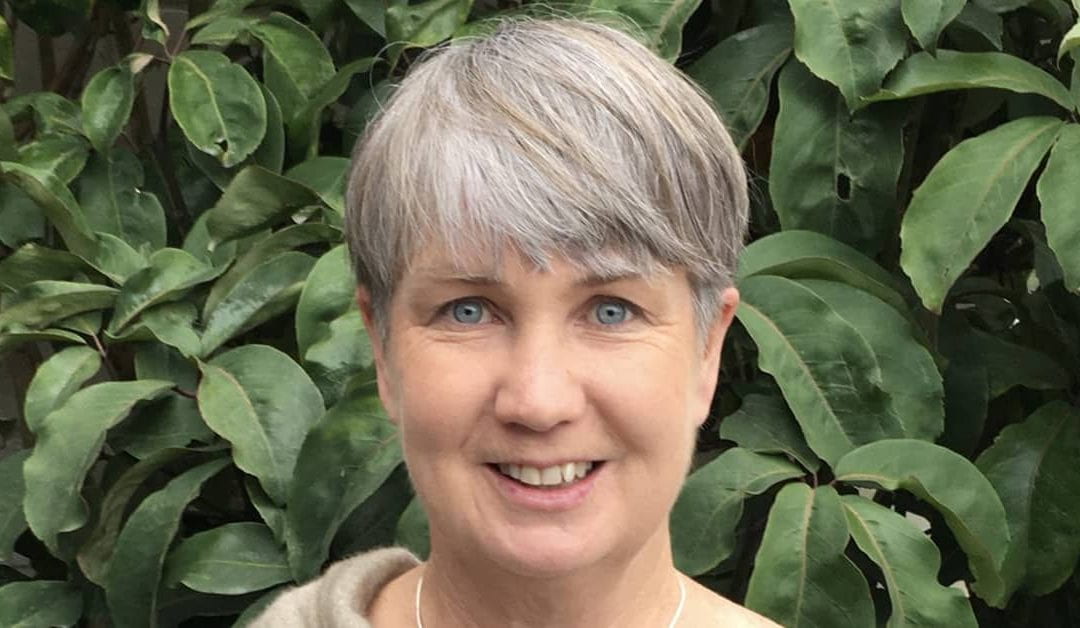Ecologist and science leader Dr Andrea Byrom has accepted a role as kairangi in Te Pūnaha Matatini.
Kairangi is a Māori word meaning ‘the finest pounamu’, which can be used to describe a person held in high esteem. This role acknowledges the important contributions of our senior colleagues.
Dr Andrea Byrom has been involved with Te Pūnaha Matatini as an associate investigator since the early days, and has contributed at many hui and supervised several early career researchers. She is currently co-supervising Te Pūnaha Matatini Whānau member Julie Mugford in the final stages of her thesis, alongside Associate Professor Alex James and Professor Michael Plank.
The project that Andrea is most proud of being involved with at Te Pūnaha Matatini was exploring the biodiversity benefits of large-scale pest control regimes with Dr Rachelle Binny. Their work quantified significant benefits for biodiversity from pest control over two decades. Andrea says that “I’m proud to have contributed to that research because it really demonstrated how important science is to the environment, and why we do large-scale conservation efforts like pest control or ecological restoration.”
She also particularly enjoyed collaborating with Professor Shaun Hendy and a group of summer interns on network analyses of the many types of people and organisations involved in environmental protection in Aotearoa. “That was a real introduction to network analyses and some of the things Te Pūnaha Matatini had to offer that I had not previously thought of applying to te taiao the environment.”
Andrea recently resigned from her role as director of Ngā Koiora Tuku Iho New Zealand’s Biological Heritage National Science Challenge. She has been working in the New Zealand science system since joining Manaaki Whenua Landcare Research as a postdoctoral researcher in 1997.
Over two decades working at Manaaki Whenua Andrea moved away from directly doing her own research and into leadership roles, after becoming interested in how science leadership could empower scientists to do their work, rather than add more bureaucracy to their lives.
She says that she “really loved that leadership style”.
“What I liked most about being a director of a National Science Challenge was having a view across all of the amazing talent that we have in the New Zealand science system.”
Her directorial responsibilities meant that Andrea did not have as much time as she would like to devote to Te Pūnaha Matatini in recent years. “I’ve been on a separate journey from Te Pūnaha Matatini for the last wee while, so to come back in as a kairangi now is quite an honour.”
“In the last few years, my interests have broadened to thinking about how we take our Te Tiriti o Waitangi partnership role seriously as scientists, and how we bring mātauranga Māori and kaupapa Māori research methods to the fore. I worked hard to facilitate a lot of that via the National Science Challenge and ended up in a co-director role in that area with Melanie Mark-Shadbolt.”
“I feel like the tide’s turning and that people are starting to listen. But it’s really important to put different perspectives and stories out there.”
After a demanding period as a director, Andrea is focusing on spending more time with her partner, as well as doing environment consultancy work and board roles. “I’m particularly interested in how important governance is to science and the environment. That’s my new passion, and as a kairangi I would like to contribute where I can – particularly around complex environmental research.”
“I love being a sounding board for students and I love coming to hui where there are great minds contributing things that I hadn’t thought of and ideas that I’m interested in.”
Since stepping back as a director, Andrea and her partner have been making the most of their time together by killing of a large amount of lawn on their half-hectare property in mid-Canterbury and replanting it with over 5,000 native plants.
How to kill your lawn with Andrea Byrom
- Acquire large quantities of cardboard boxes and flatten them
- Lay cardboard over lawn on non-windy day
- Cover cardboard with a whole lot of mulch
- Water it all down
- Leave for two months
- Replant with native plants
Links
• Long-term biodiversity trajectories for pest-managed ecological restorations: eradication vs. suppression – Ecological Monographs

